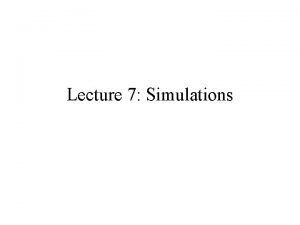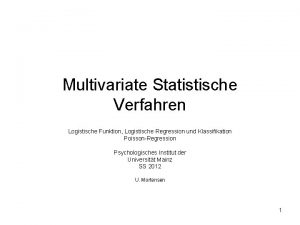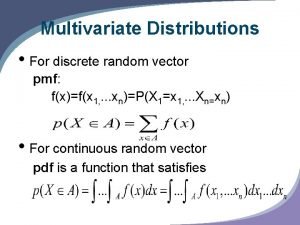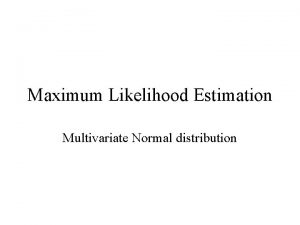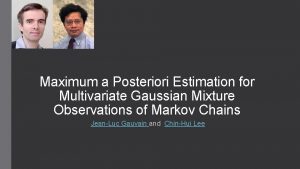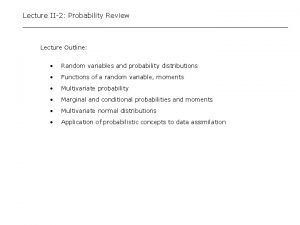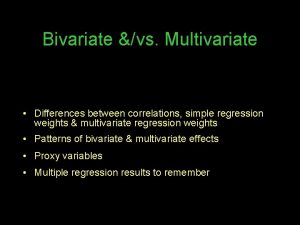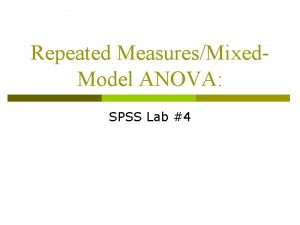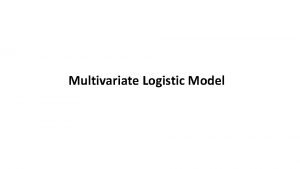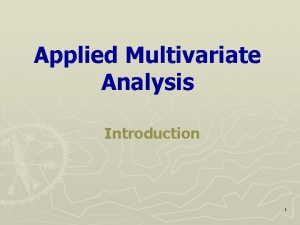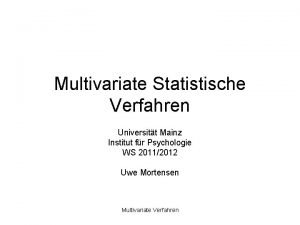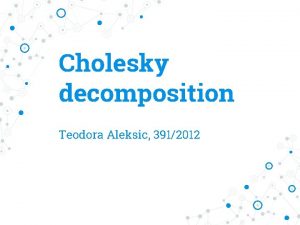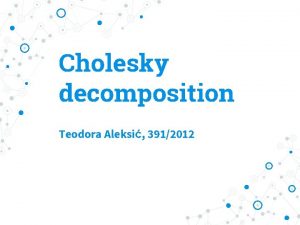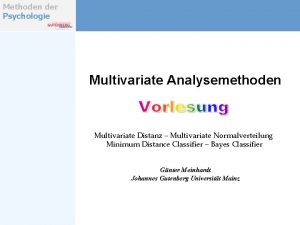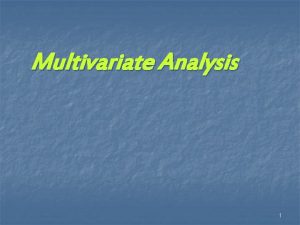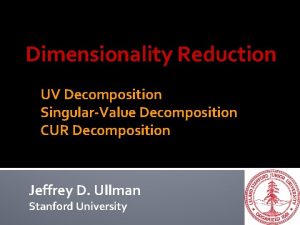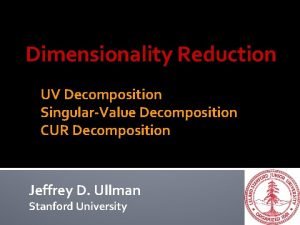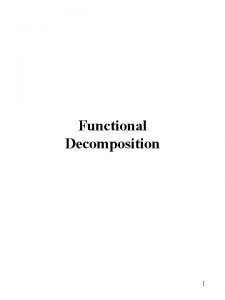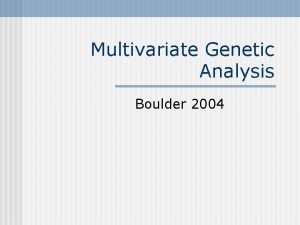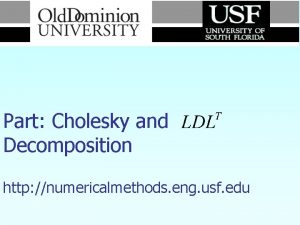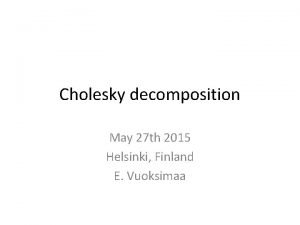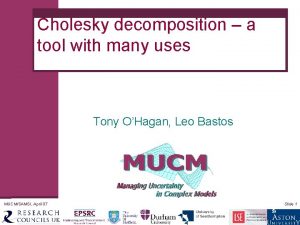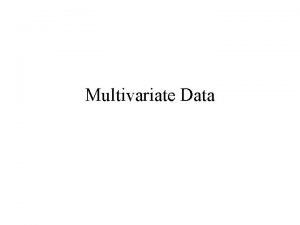The use of Cholesky decomposition in multivariate models
















- Slides: 16

The use of Cholesky decomposition in multivariate models of sex-limited genetic and environmental effects Michael C. Neale Virginia Institute for Psychiatric and Behavioral Genetics Virginia Commonwealth University

The Problem )ACE model )Classical Twin Study )Sex limitation model )Univariate ok 2 2 5 rdzm =. 5 am + cm 2 5 rdzf =. 5 af + cf 2 5 rdzo =. 5 amaf + cmcf

Scalar sex-limitation DZ OS 0. 50 1. 00 A 1 M A 2 M xm P 1 M ym 0. 50 A 1 F zm P 2 M 1. 00 xf P 1 F A 2 F yf zf P 2 F

Scalar sex-limitation DZ Females 0. 50 1. 00 A 1 F xf P 1 F yf xf P 2 F P 1 F yf P 2 F

Scalar sex-limitation DZ Males 0. 50 1. 00 A 1 M xm P 1 M 0. 50 1. 00 A 2 M A 1 M A 2 M xm zm P 2 M P 1 M zm P 2 M

Scalar sex-limitation Opposite sex 0. 50 1. 00 A 1 M xm P 1 M 0. 50 1. 00 A 2 M A 1 F A 2 F zm P 2 M xf P 1 F yf P 2 F

Algebraically Genetic covariances across twins P 1 P 2 rdzm = P 1. 5 xm 2 0 P 2 0. 5 zm 2 rdzf = P 1. 5 xf 2. 5 xfyf P 2. 5 xfyf. 5 yf 2 P 1 M P 2 M rdzo = P 1 F. 5 xmxf 0 P 2 F. 5 xmyf 0

Conclusion )Whichever is second variable in males it cannot correlate with females )Whichever correlates less empirically will fit better )Something's screwy

Questions )What does scalar sex-limitation mean )Why does Cholesky not obey?

Solution )Same factors operate in males & females but have different sized effects )If they are the same factors, they should correlate the same )Cholesky allows different covariance structure among factors

How to fix it )Re-parameterize model 5 Estimate correlations among factors 5 Constrain equal across sexes 5 Linear constraints )Constrain Cholesky Model 5 Standardized covariance components should be equal 5 Non-linear constraints

Reparameterized Correlation Approach 0. 50 1. 00 rg A 1 M 1. 00 A 2 1. 00 M xm P 1 M 0. 50 1. 00 A 2 F A 1 F zm P 2 M rg xf P 1 F zf P 2 F

Correlation approach Advantages Disadvantages Conceptually Elegant Non-positive definiteness may occur Linear constraints

Cholesky Approach A how-to guide ) Additive Genetic Loadings In Males 5 A = X*X' ) Additive Genetic Loadings In Females 5 G = K*K' ) Declare F Izero nvar-1 nvar ) Constraint vech(F&stnd(A)) = vech(F&stnd(G)) ) Do Same for C/D and E matrices

Cholesky approach Advantages Disadvantages Same old model Requires non-linear constraints Keeps positive definiteness Estimates more parameters

Final Answer )Use whichever you like )Need non-linear constraints either way )Problem is not limited to Cholesky Model )Fix models with > 1 factor
 Cholesky decomposition excel
Cholesky decomposition excel Difference between modals and semi modals
Difference between modals and semi modals Logistisches wachstum ableitung
Logistisches wachstum ableitung Multivariate binomial distribution
Multivariate binomial distribution Multivariate pdf
Multivariate pdf Multivariate analysis
Multivariate analysis Multivariate regression spss
Multivariate regression spss Mle for multivariate normal distribution
Mle for multivariate normal distribution Maximum a posteriori estimation for multivariate gaussian
Maximum a posteriori estimation for multivariate gaussian Multivariate pdf
Multivariate pdf Bivariate vs multivariate
Bivariate vs multivariate Anova meaning
Anova meaning Mixed design anova spss
Mixed design anova spss Univariate vs multivariate logistic regression
Univariate vs multivariate logistic regression Multivariate methods in machine learning
Multivariate methods in machine learning Nature of multivariate analysis
Nature of multivariate analysis Multivariate verfahren psychologie
Multivariate verfahren psychologie
